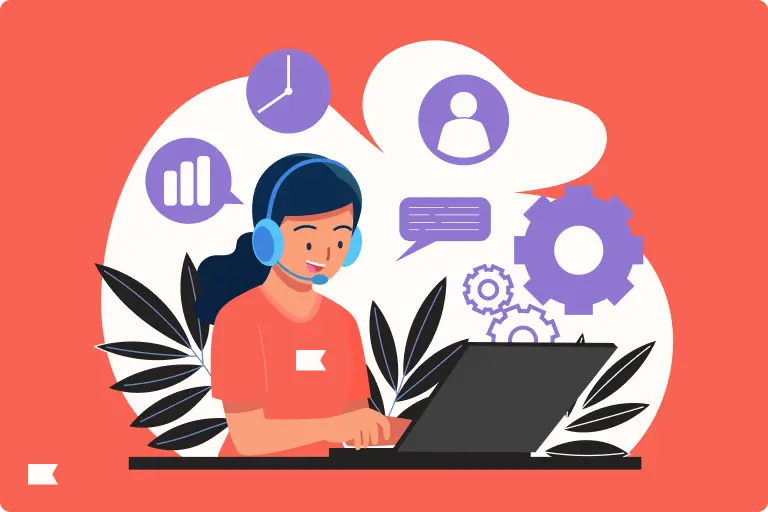How CRM and lifecycle marketing work together to drive B2C growth

Growth today isn’t about blasting emails or launching one-time campaigns. It’s about orchestrating the entire customer lifecycle using your customer relationship management system (CRM).
With Klaviyo being the CRM for B2C brands, a critical piece determines whether that CRM delivers results or becomes just another software subscription: lifecycle marketing strategy.
I’m founder & CEO of Longplay, where we have 40+ years of combined experience and have generated over $500 million in revenue across more than 100 brands. We’ve noticed that those winning in today’s market have flipped the script. Instead of thinking bottom-up—“Here’s what we’re doing for email, here’s what we’re doing for text message marketing, and hopefully all this stuff is generating revenue somehow”—they’re thinking top-down.
That’s right: winning brands start with the entire customer lifecycle, identify where they’re losing customers and revenue, and then use their CRM to systematically move more people through each stage.
This is lifecycle marketing as the activation layer that transforms CRM data into revenue.
What CRM marketing really means for B2C brands
Most B2C brands, especially those that are direct to consumer (DTC), are still thinking about email service providers (ESPs)—platforms that send emails. But a CRM is fundamentally different. It’s a command center for understanding and influencing the customer journey.
Where an ESP sends messages, a CRM manages relationships. And managing customer relationships requires:
- Unified customer profiles: seeing the complete picture of each customer’s journey
- Behavior tracking: understanding what customers do, not just what they buy
- Advanced segmentation: grouping customers by lifecycle stage, intent, and value
- Omnichannel orchestration: coordinating email, text messaging, push, WhatsApp, and other touchpoints
Here’s the key insight: a CRM gives you data, but it’s lifecycle marketing that transforms that data into revenue.
Lifecycle marketing: the strategy that unlocks CRM value
The most successful DTC brands we work with organize their retention strategy around 6 core lifecycle levers. Each lever serves a specific purpose in moving customers through their journey, and together they create a system that drives predictable, recurring growth.
1. Pop-ups: first impression, first data point
Smart pop-ups do more than collect email addresses and phone numbers—they segment by intent and initiate the lifecycle journey. We collect data through advanced forms and then use that tagged data to personalize the welcome flow immediately.
For a skincare brand, if someone indicates they’re looking for hydration through the pop-up, the welcome flow might immediately focus on hydrating products and education.
“It’s also important to ask the customers about the sizing if you sell clothing,” says Christian Nørbjerg Enger, co-founder and CPO at Segmento, a fast-growing, full-service marketing agency based in Denmark. “That way, if the product they purchased fits a certain way, we can use that to show better recommendations going forward. It also minimizes returns by recommending the right sizes going forward.”
This level of personalization is only possible when your sign-up forms, segmentation, and flows are all integrated in one platform.
2. Flows: the lifecycle engine
Flows are your always-on automations aligned with customer stages:
Flows aren’t just email sequences. They’re the engine that drives customers from one lifecycle stage to the next.
“Flows are how we meet customers exactly where they are in their journey,” says Jennifer Gilbert, head of ecommerce at Nutra Organics, a health food brand based in Australia. ”Whether it’s a personalized welcome, a category-based replenishment reminder, or quiz-driven product recommendations, every message is tailored, even down to whether it’s a text or an email.”
Think of an abandoned cart flow, for example, not as simply sending the associated emails, but as moving customers from evaluation to purchase. Over the last 6 months, my team at Longplay and I have helped brands convert high percentages of customers who abandon their carts through strategic flow sequences that address hesitation at the right moment with the right message.
This is how flows drive predictable, recurring revenue: they turn customer behavior patterns into automated relationship-building moments.
Flows are how we meet customers exactly where they are in their journey.
3. Campaigns: revenue acceleration
Lifecycle-aware campaigns are tied to promotions, product launches, and strategic segmentation. But here’s what most brands miss: campaigns should map to customer intent, not just marketing calendars.
Instead of blasting the same promotion to your entire list, lifecycle marketing means asking: “Who is ready for this message right now?”
A product launch might drive better results when you send it to customers who’ve shown interest in that category vs. first-time buyers who are still learning about your brand.
Gilbert shares that at Nutra Organics, the team uses zero- and first-party data to hyper-segment campaigns. “This ensures that customers who’ve shown real interest in a product or topic receive the message, not just our broader engaged list,” she says.
4. Reviews: the advocacy loop
A well-timed review request flow builds trust and closes the loop on loyalty. Your CRM data tells you when and whom to ask—not everyone who makes a purchase, but customers who’ve had time to experience the product and shown positive engagement signals.
This transforms your review request from a generic “please review us” into a strategic advocacy driver that feeds back into social proof for future customers.
5. Service: purchase and adoption drivers
Post-purchase emails and frictionless onboarding turn one-time buyers into repeat customers. But customer service shouldn’t be reactive—it should be proactive.
At Longplay, we automate customer experience check-ins through SMS with personalized texts, like, “Hey, it’s Xavier here checking in, wanting to see how things are going.” Your CRM should be able to automate and personalize these service touchpoints in a way that feels human and opens channels for real communication.
Proactive customer service includes subscription renewals, usage tips, and creating clear paths for customers to reach out if they need help. It’s about removing friction from the entire post-purchase experience.
Your CRM should be able to automate and personalize these service touchpoints in a way that feels human and opens channels for real communication.
6. Marketing Analytics: fixing the lifecycle leaks
A CRM shows you where people are dropping off in your customer journey. Lifecycle strategy turns those insights into flows, content, or offers that patch the “leaky bucket.”
Instead of wondering, for example, whether email is working, you can answer specific questions like:
- What percentage of people move from abandoned cart to purchase?
- Which touchpoints are most effective at driving repeat purchases?
This data-driven approach lets you optimize the entire customer journey, not just individual channels.
“This is so important, because no two customers are the same,” says Enger. “When building out your CRM strategy, make sure to work in multiple funnels, so you communicate specifically to the customer where they are, whether they’ve never bought, bought just once, or bought several times.”
For example, Enger adds, “at Segmento, we mainly focus on lifetime value analysis and post-purchase analysis to decide which products and categories our customers are most likely to buy next according to their previous order history.”
Working in multiple funnels is so important because no two customers are the same.
CRM: the power of a unified customer view
When everything lives in one platform, you can see patterns and data points across all your different customers. You can identify where the majority of your customers are dropping off and where they’re responding really well.
The alternative—managing email on one platform, SMS on another, with a separate sign-up form tool—means spending time on admin work instead of optimization. You’re constantly pulling data across different platforms, cross-checking attribution, and trying to create cohesive experiences across disconnected tools.
Unlike in advertising, the hardest game in lifecycle marketing isn’t budget optimization. It’s resource and time management. What should you prioritize? Are you using your team’s time well? A unified platform solves both of these challenges by eliminating the overhead of managing multiple systems.
A CRM without strategy is just software. Lifecycle marketing without data is guesswork. You need both.
If you’re ready to transform how you think about customer relationships and lifecycle marketing, the infrastructure is already there. The question is: who’s helping you activate it?

Related content

See how Customer Hub, Customer Agent, and Helpdesk powered faster support, reduced tickets, and boosted revenue during Klaviyo Service’s first BFCM.

Post-purchase experiences are where customer loyalty begins. Learn how to automate and personalize them to grow your B2C brand

Discover 5 tips for managing Black Friday customer service. From AI agents to unified data, see how Klaviyo helps brands turn support into a revenue driver.